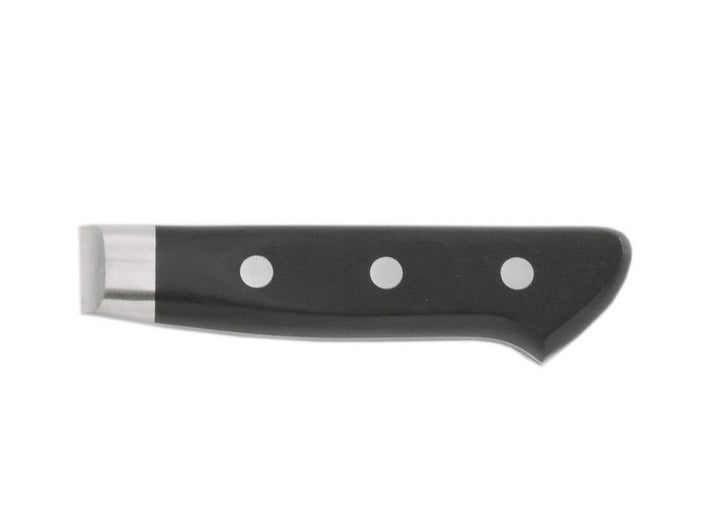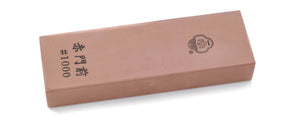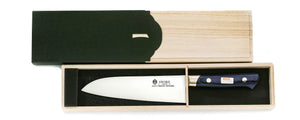G-Line Series
Our G-Line Series is used by many chefs domestic and abroad, and we have reliably made and sold it for decades. Many chefs from different cuisines report enjoying G-Line knives thanks to their high hardness levels, long edge retention, and good cutting ability. The VG-1 stainless steel used in G-Line knives is manufactured well, using raw materials with few impurities. With 1% carbon and 14% chromium, this steel is hard, wear-resistant, rust-resistant, and cuts through food seamlessly. These four benefits are what any good blade is measured on, and G-Line rates highly in all categories.
This knife cannot use Wooden Saya.
| Product number | Actual Blade Length (mm) | Full Length (mm) | Total Weight (g) |
|---|---|---|---|
| 1ueg-165 | 165 | 290 | 175 |
| Blade | Material Name | Handle |
|---|---|---|

Single Edged |
VG-1 | Compressed plywood handle with brim |

Usuba (Edo Type)
Usuba knives are traditionally used for cutting and peeling vegetables in Japanese cuisine. Edo-type (rectangle-shape) usuba are more commonplace in Kanto and Eastern Japan. The rounded top edge prevents cutting board-based damage and scoops ingredients with ease. Most professionals use a 210-240mm usuba knife for quick processing. This size is also suitable for the home, but 180mm is better for smaller vegetables.

VG-1
A stainless steel with high hardness and long edge retention
Stainless Steel
VG-1 makes its mark as a reliable stainless steel, which we've made knives with for decades. Its key feature is a high hardness level, which also means longer edge retention. A well-made VG-1 knife will have excellent sharpness compared to other stainless steels as the raw materials contain very few impurities. While the high hardness makes sharpening a little difficult, it also makes a knife that can cut well for a very long time. We recommend this steel for people who do longer cutting sessions and don't want to sharpen during those processes.

Compressed Wood
This handle is made of a durable, compressed plywood, with a flange attached to improve balance. It's known for being very hygiene-friendly because water cannot easily get into the core wedged between the handle.

Mono Steel
Mono-steel knives, sometimes called single-steel knives, are made entirely of one piece of steel. Mono-steel knives have better cutting power versus clad and Damascus-finished knives with the same steel material. While mono-steel knives are vulnerable to impact damage, a master artisan can properly quench and remove the steel's distortions, removing this downside while creating a sharp cutting edge.

Optional Engraving
Optional Engraving Service
Sakai Ichimonji provides complimentary engraving using either Japanese Kanji or English Alphabet. Please specify your preference. For details, please visit here
A knife store that has supported the history of knives and food culture in Japan.
It has been 600 years since the birth of swordmaking in the Sakai region of Japan. Sakai Ichimonji Mitsuhide's and it's craftsmen continue to build on that legacy by producing the finest blades in Japan.
This is where the culture of completing a dish of sashimi by "just cutting" and the culture of expressing sharpness as "taste" was born.
For 70 years, we have been connecting the spirit of Sakai's craftsmen with the passion of chefs in Osaka's kitchen equipment shopping district, known as the kitchen of Japan.
We are very happy that our knives can be used by people all over the world.
Precautions
After use, wash off any dirt and wipe thoroughly with a dry cloth to remove any moisture. This product is not for use with frozen foods.This product is handmade, so each piece will be different. Please use the weight and length listed as a guide. Each material is natural and may vary in color. It is not the same as the picture.We take great care with our inventory, but in the unlikely event that we are out of stock, we will contact you by email to let you know.




































